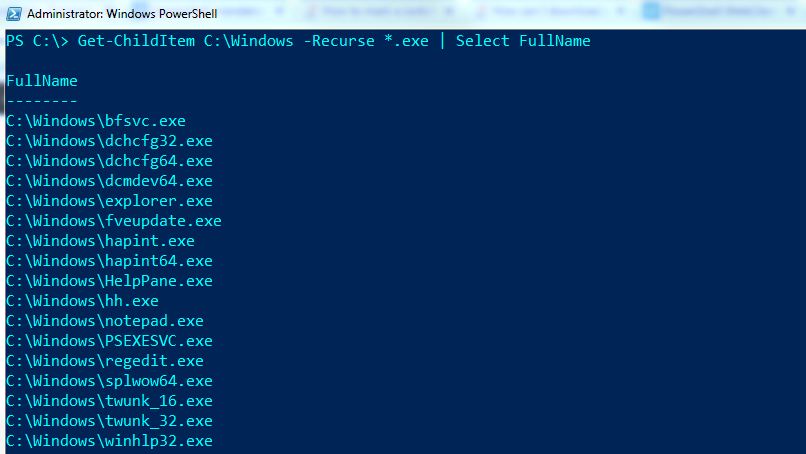
- POWERSHELL LIST DIRECTORY CONTENTS TO FILE HOW TO
- POWERSHELL LIST DIRECTORY CONTENTS TO FILE MANUAL
- POWERSHELL LIST DIRECTORY CONTENTS TO FILE WINDOWS
Next, we’ll move on to creating folders or directories. Thus, these are the different ways to create a file including the considerations you should keep in mind. This will create a file called textfile1.txt in the C:\Temp directory and it will contain your message. $content = 'Hello world! This is the first line of my file.' | out-file -filepath C:\temp\testfile1.txt The good news is PowerShell has a built-in command called Out-File to create a file and write data to it at the time of creation, provided you know what should go in. Rather, you’d want a file with data and preferably with an option to add more content to it regularly. Most times, we don’t need an empty file as it makes little sense. This is why it is not good programming to use this switch parameter and if you have to do so, exercise caution. While this may seem like a good idea, there is always a possibility for errors and you could lose the data present in existing files. This command will forcefully create a file and overwrite the existing one because you’re effectively telling the system that you know what you’re doing and you don’t need any warnings or reminders about overwriting files. New-Item -Path '\\Shared\TestFolder\testfile1.txt' - ItemType File -Force But sometimes, you may have to overwrite a file and you can do that using the Force switch parameter.
POWERSHELL LIST DIRECTORY CONTENTS TO FILE HOW TO
Overwriting an existing fileĮarlier, we saw how to avoid overwriting an existing file. The above script will check if a file with a similar name exists in the same directory and if so, it will exit. New -Item -Path '\\Shared\TestFolder\testfile1.txt' - ItemType File $filenames = Get-ChildItem \\Shared\TestFolder\*.txt | select -expand fullname Another option is to have a script that will automatically check if another file exists with the same name and will create a file only if there is no other file with that name.Īn example of such a script is shown below. So, make sure you check for the file name before you create a file. Now if there was already a file with the same name, it will overwrite it. Creating files after checking for the file name In other words, this command will create an empty text file for you. Here, the Itemtype is a file, so this will create a file for you and the contents will be empty. The above command will create a new file called testfile1.txt. New-Item -Path '\\Shared\TestFolder\testfile1.txt' - ItemType File Here is how you can create a file or folder in PowerShell using the New-Item command. All that you have to do is specify the type of object you want to create in this cmdlet. In general, this cmdlet is used to create any type of object in PowerShell.

To create a new file, use the New cmdlet.

In this article, we’ll be focusing on how you can create files and folders in PowerShell Creating a file

POWERSHELL LIST DIRECTORY CONTENTS TO FILE MANUAL
In fact, it can reduce the amount of manual work associated with file management. The good news is you can use PowerShell to manage files easily.
POWERSHELL LIST DIRECTORY CONTENTS TO FILE WINDOWS
File management is an essential part of the everyday routine as you’ll have to manage access to shared folders, back up files and folders regularly, and do the other standard operations on files and folders in your Windows system.


 0 kommentar(er)
0 kommentar(er)
